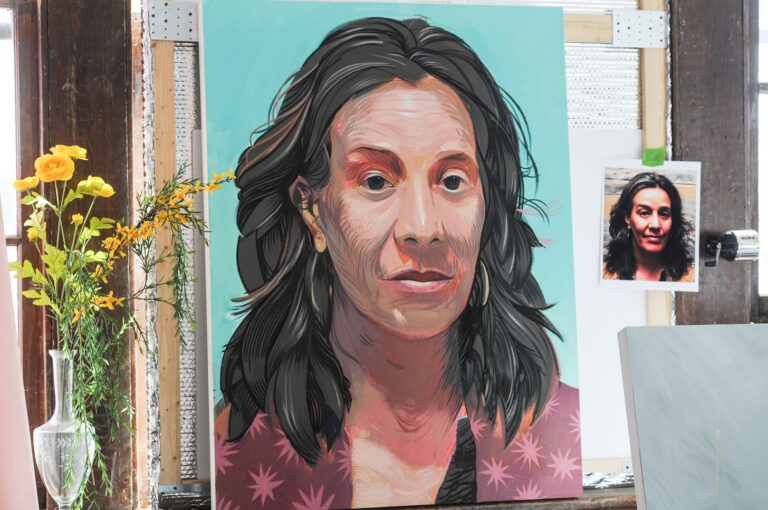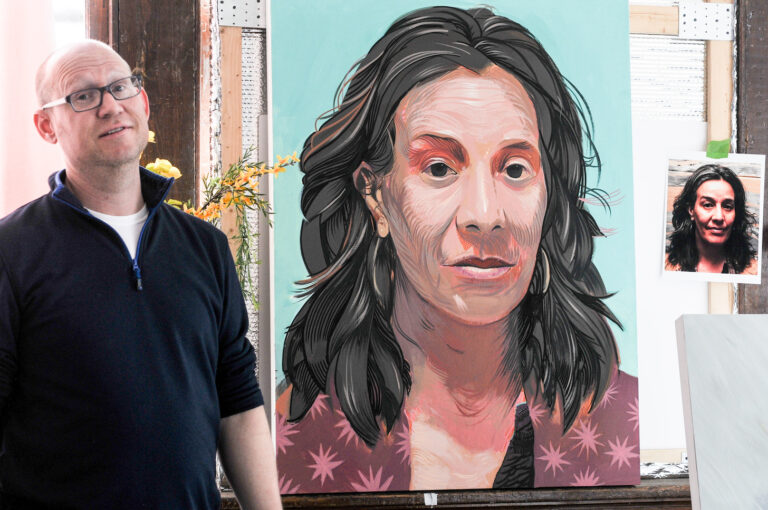Andrew Fearnside staggered after the election of Donald Trump, unsure of his footing and unable to clearly see his next step. The will to act was there, but the specific action remained elusive. He tightened the loose knitting of his friend group and found community to be an action unto itself. A visual artist, he set out to explore the themes of community as a way to do something with the tools at hand and found himself in a deep dive into solidarity.His new work, showing for one night only this Friday at the OT Circus Gallery, is the first public step in a process he hopes will spur a discussion about Albuquerque’s creative community. Weekly Alibi sat down with Fearnside to talk about community and what drives his interest in bringing community into his work. The following is an edited version of that conversation:Weekly Alibi: What do you mean by community?Andrew Fearnside: Community is a network. You could say it’s a meshwork, instead of Facebook’s points and lines. It’s more organic than that. The lines, the connections, they have more life to them.Community is more nebulous than that?This is the thing. To me, after Trump, community is what everybody is working on. That is the thing we can do as actual human beings [who] aren’t celebrities. We can form community. We can form stronger bonds between one another and then see what those bonds give rise to. We can step outside the bonds that marketing creates—that commercial culture creates—and instead form more complex relationships. Human relationships.To me, this is all opposed to “Marketingland” where a relationship is—you bought Tide so now you are in the Tide community. Or you like Michael Jackson, so you’re in the Michael Jackson community. That’s not community. That’s not a bond. Well, it is, but it is orders of magnitude smaller than what community can be and should be.How does your work as a mental health councilor inform your work as a visual artist?There is something about empathizing with a person. Learning about their story and being part of their story. Being present for them, feeling it and being empathetic with it, that is just an incredible experience. A lot like looking at a painting or making a painting.How has your work been impacted by Trump’s election?I was making spectacles out of trash that were designed to be open-armed to everybody that wanted to come to the Halloween thing at Summit Park, and out of that I started to realize that this is an experience that people want. There is something about having open borders and the sense of a free discussion that people really want, and that I really want too. I was kind of lost after Trump was elected. It really made no sense to me. So it took a while to really figure out what I could do. This is something I can do.Your work looks into community connections. Do you see those connections as having a political underpinning or are they connections that are brought about by political events?I think that is a really good question. I think community is bigger than politics. Community, and the relationships that make it up, are much more complex and much more emotionally deep and rich than politics.Do you prefer this larger format or the smaller book format you had been working in?Truth be told, I don’t know. I really enjoy trying these big things, and I also really enjoy making really small linocuts with tiny movements and stories that are much bigger.This show is a one-day pop-up. Do you consider it a trial for something larger or is it all encompassing?This is definitely a first step—a jumping off point for a project that will be larger.Do you have a solid idea of what that project will be?I do. Somewhere between 15 and 20 paintings all of this size or larger. I want this popup to be a chance to ask everyone who comes: “Who is on your list? Who is the creative community? If you had to draw a line around it, who do you include?”How do you plan on engaging the community that comes to your show to get those answers?In a couple ways. I’ll put a little pad of paper beneath each [painting] and on there a check box asking if you are a friend of this person or not. What I want to solicit is, “How do you know this person and what have they done that has really moved you? Are these people leaders in your life?” There will also be a suggestion box asking, “Who do you want to include in creative community? Who is a leader to you? Who do you nominate? Who do you think should not be here?” I’ll also have a large piece of cardboard with questions like, “What is community and why does it matter to you?” I’ll have Post-its for people to respond to that question. Lastly, I want to have a soapbox, stop the hubbub for a moment and let anyone that wants to speak about these kinds of issues actually stand on the soapbox and talk for a few minutes. I’ll probably do that, too.
Forever Now: New Portraits by Andrew FearnsideOne night only, Friday March 15, from 5 to 9pmOT Circus Gallery (709 Central Ave. NW). This event is free and open to the public.











